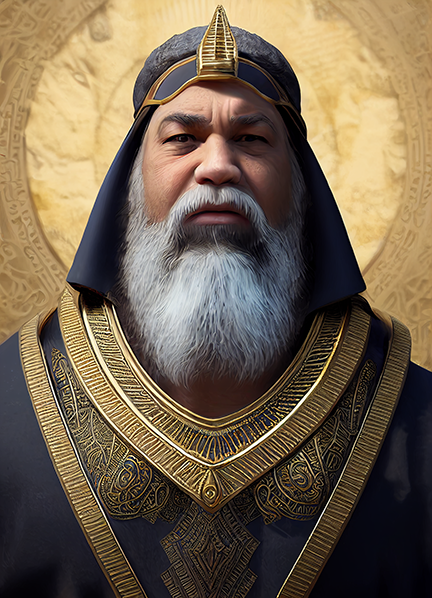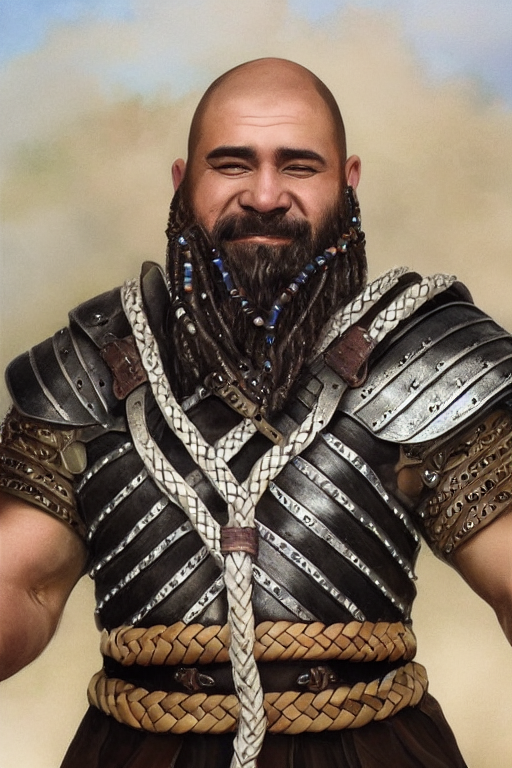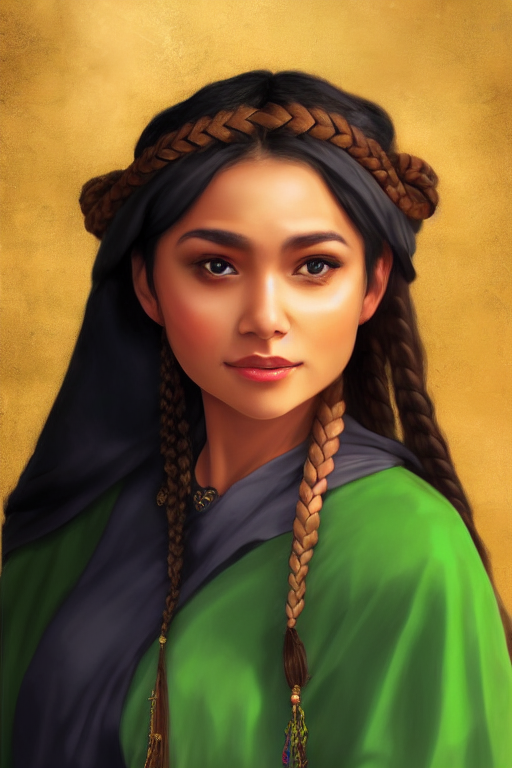Ptahmenu (Tah-Men-U)
The Ptahmenu
The Ptahmenu in the Kingdom of Khemit, also known as the sand or southern dwarves of Libynos. They prefer being called Ptahmenu after Ptah, god of creation, where dwarf is more derrogatory, coming from the Hyborian language, noting a physical lesser status. They have no kingdom of their own, nor have they isolated themselves like the Estiri. Many live among the Khemitian people across the Kingdom with the largest concentration living at Fort Buhen, the southern most Khemit city. There are small clans on the border of the Red Lands where they dig deep under the desert sands for water and wealth.Appearance
The Ptahmenu are half the height of a Human Khemitian and have a slightly wider build. They have a more bronze skintone and the men will often grow beards (even in the hot desert). Both men and women braid their hair. Their hair ranges from black to Gold to red.As part of their look, men would shave their heads and wrap their beards tightly in linen, Gold or copper wire; sometimes these beards are forked or braided as well (though not in the ruling style of beard ofcourse). The length and quality of ornate wrapings do have an indication of status. Another sign of status is to have soft plush skin (the working class has dry, calloused skin). The wealthy barter access to water to traders in exchange for coconut and shea butter creams. while there is currency for purchasing goods, many ptahmenu elders keep to the old ways of bardering and trading jugs of water, beer, and wine. Even Doweries are measured in Jugs and Kegs.
Clans
Clans are an important part of the Ptahmenu. Even more than status. It's the family they belong to, the trades they were taught, and the stories they were told. Every Ptahmenu should belong to a clan, and with each clan, there's a Maker's Mark. It's a mark of honor and pride, Everyone's work has that mark along with unique sigils of the craftsman. the gold and silver beads worn by the Ptahmenu have such marks hammered into them and are never used for trade (only unmarked glass and bronze ones).Have you had water today?
History
The Ptahmenu have always coorliated water to wealth. Water is needed to survive, to travel, and to grow food. with the Great Sand Sea, a few of the older clans took control of the oasis during ancient Khemitian period, when the kingdom splintered. Many of these oasis-cities became city-states at the time. Other clans used their engineering technology to build large cisterns, channeling the water from rivers under ground, creating a network of rest stops along trade routes. When the Khemitian kingdoms are reconsolidated brutally under the Sky Pharaoh in -934. Clan SkyIron and Clan Miolica were lost in the war. Under the Hyborian Hedgemony, the clans grasped the concept of currency, goldsmiths from various clans became invaluable to Khemit in creating a consistant coinage system that even the hyborians were jealous of 3000 years later. Unbeknownst to the Common Khemitian, this was the third even that they should respect the Ptahmenu. without the quick adoption of currency and coin making and sizeable contribution of gold and silver from the clans, the kingdom might not be what it is today.Interaction
Two great legendary stories have influenced the people of Khemit about how the Ptahmenu are to be treated. The first is in anceint times, many of the great works were built by them; their maker's mark can still be found in the ruins. The second, It is said that the Ptahmenu hid the body of Pharaoh Menkamin I, the Last Pharaoh from desecration by the invading Hyborian army and instead of returning, they died in the moutain protecting the Last Pharaoh. Because of these stories, the Ptahmenu are given much respect as a whole.There are a few assumptions of the Ptahmenu, though not as bad as the Estiri. some Khemitians believe that all Ptahmenu are arcitects or engineers because of the maker's mark. The Ptahmenu may have more craftsmen, but there are those that are Beqenu who have chosen not to be crafters. The maker's mark becomes more of a stamp of permanence. When the Beqenu dies, not only will his name be remembered, his goods can be brough back to the clan.
Religion
While they have the story that they were created by the god Ptah, much of who Ptah is, was lost due to the Hyborian Hedgemony. destruction of temples and killing of priests left Ptah in name only to the Ptahmenu.May your thirst be quenched and your beer be cold
Ptahmenu
Darkvision. Accustomed to life beneath the sand, you have superior vision in dark and dim conditions. You can see in dim light within 60 feet o f you as if it w ere bright light, and in darkness as if it were dim light. You can’t discern color in darkness, only shades o f gray.
Resilience. You have advantage on saving throws against poison, and you have resistance against poison damage (explained in chapter 9).
Combat Training. You have proficiency with the Battle Axe,Mace Ax.
Stability You know where your feet need to be, even on shifting sand. Gain advantage on any save or skill check against being prone. Spend a Minor Action to stand up without movement cost.
Tool Proficiency. You gain proficiency with the artisan’s tools o f your choice: smith’s tools, brewer’s supplies, or mason’s tools.
Stone Cunning
Whenever you make an Intelligence (History) check related to the origin o f stonework, you are considered proficient in the History skill and add double your proficiency bonus to the check, instead of your normal proficiency bonus.
Information that can be gleaned:
- If carved by Ptahmenu or Khemitian (DC 10)
- Period of Carving (DC 15) - Current, Late, Old, or Ancient
- Original or Replacement work (DC 17)
Languages. Khemitian (Spoken)
Remove these ads. Join the Worldbuilders Guild












Comments